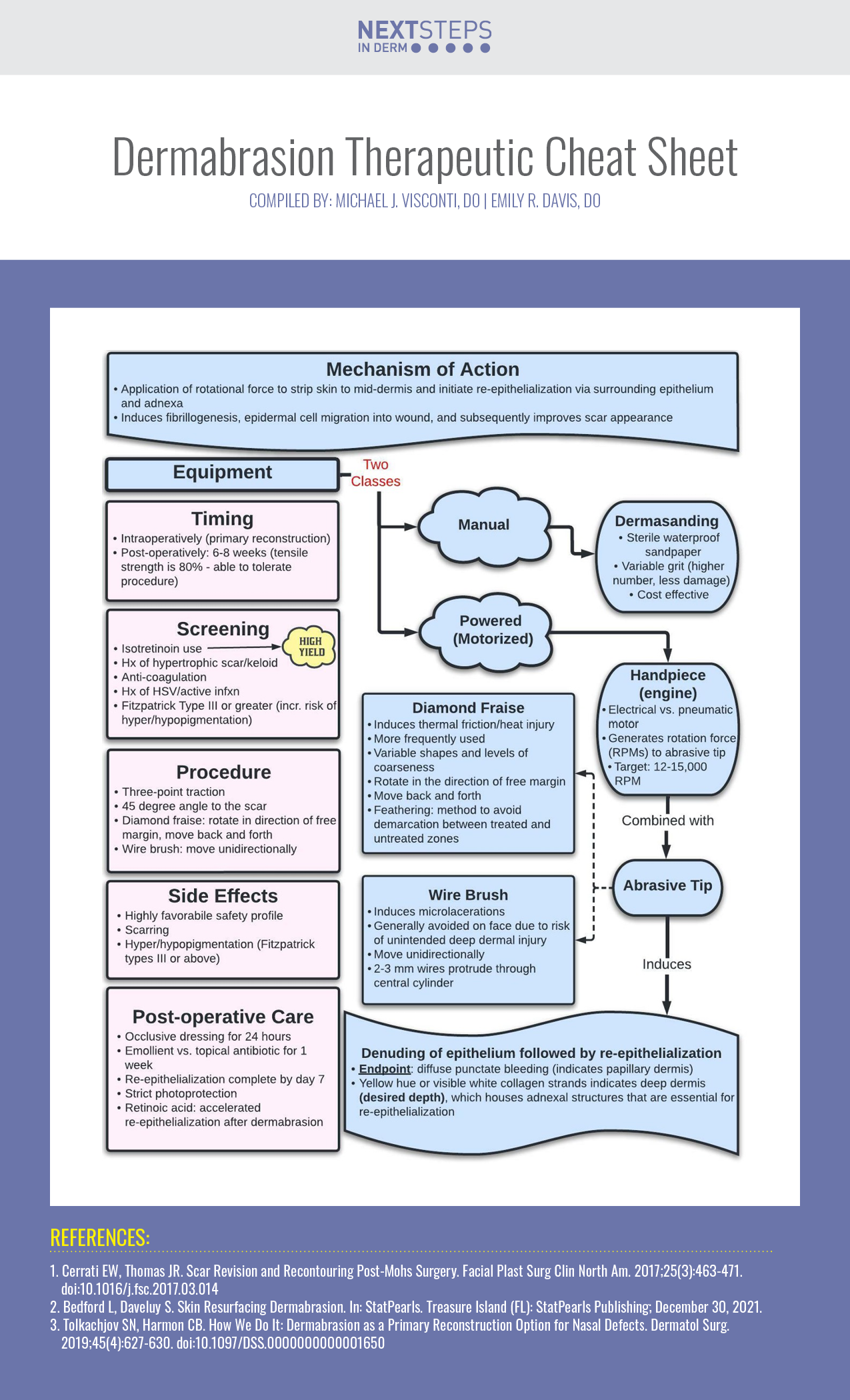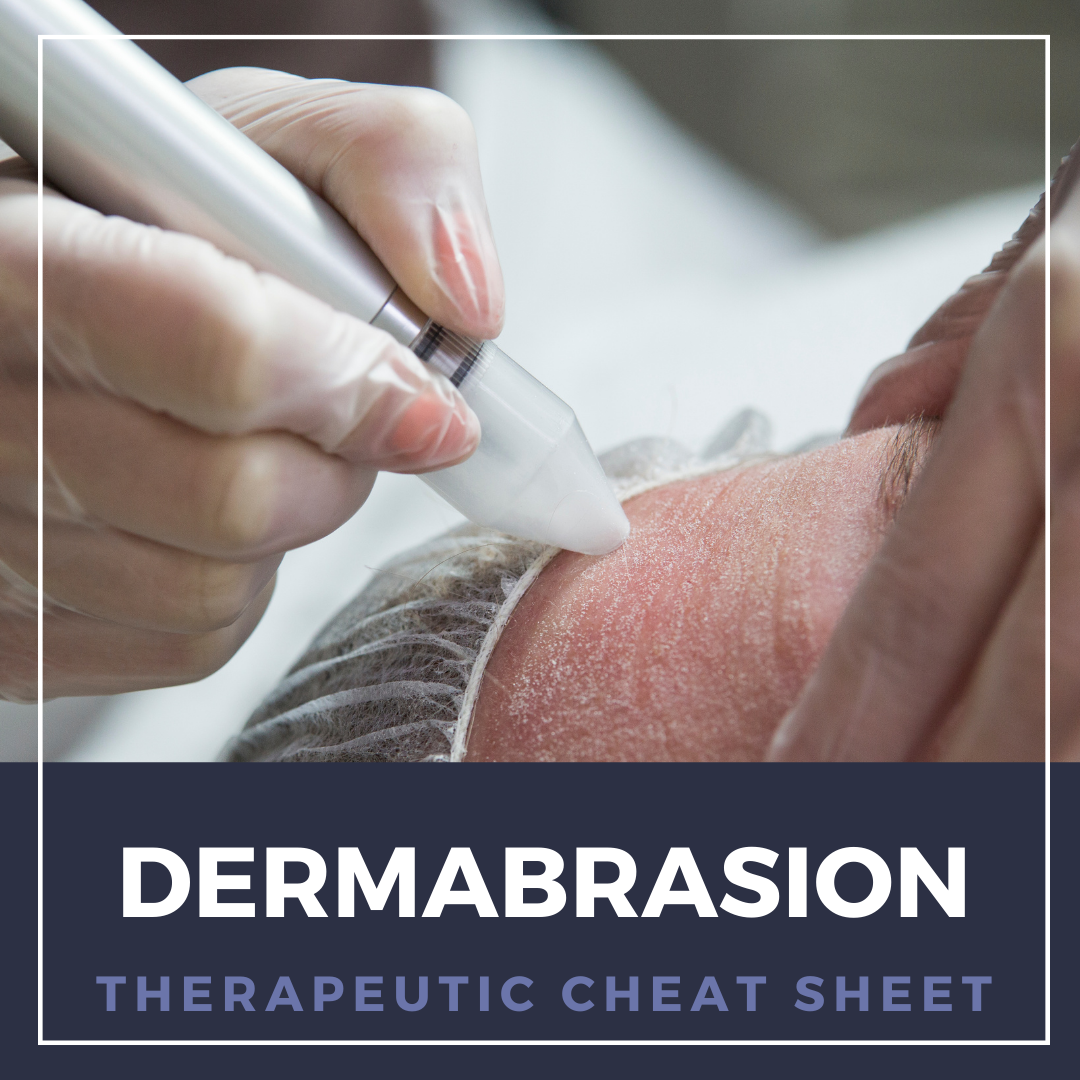At its core, dermabrasion is the application of an abrasive surface to the skin with the goal of inciting cutaneous injury to subsequently induce a healing response. This relationship is utilized in dermabrasion to promote improved complexion, contour, and appearance of the skin in the treatment of acne scarring, surgical scarring, destruction of benign cutaneous lesions, as well as a secondary reconstruction modality following tumor extirpation with Mohs micrographic surgery. This therapeutic cheat sheet highlights the technical application of dermabrasion in dermatologic surgery while emphasizing the core principles of its utility.

Further Reading
To learn more about dermabrasion and its many applications, check out the following articles published in the Journal of Drugs in Dermatology:
Background: Dinoprostone (DNP), a prostaglandin E2 (PGE2) analogue, has been found to cause repigmenation in vitiliginous lesions. Combined medical and surgical therapy might be more useful for successful treatment of vitiligo.
Objectives: In this study, we aimed to evaluate the efficacy and safety of dermabrasion followed by dinoprostone gel and to compare it with tacrolimus ointment following the same procedure in the treatment of localized stable vitiligo.
Methods: 40 patients of stable vitiligo were enrolled which were divided in two groups of 20 patients each. In group 1, dermabrasion followed by tacrolimus 0.1% ointment was done and in group 2, dermabrasion followed by dinoprostone gel was done.
Results: Group 1 patients showed slightly better response (P=0.039), whereas the side effect profile was better for group 2.
Conclusion: DNP and tacrolimus have immunomodulatory and melanocyte stimulating effect and are well tolerated when combined with dermabrasion. Their effect on skin pigmentation could be enhanced by dermabrasion.
J Drugs Dermatol. 2021;20(5):519-522. doi:10.36849/JDD.5751
Combination of Fractional Resurfacing and Dermabrasion Techniques to Improve Aesthetic Outcomes of Facial Grafts
Background

